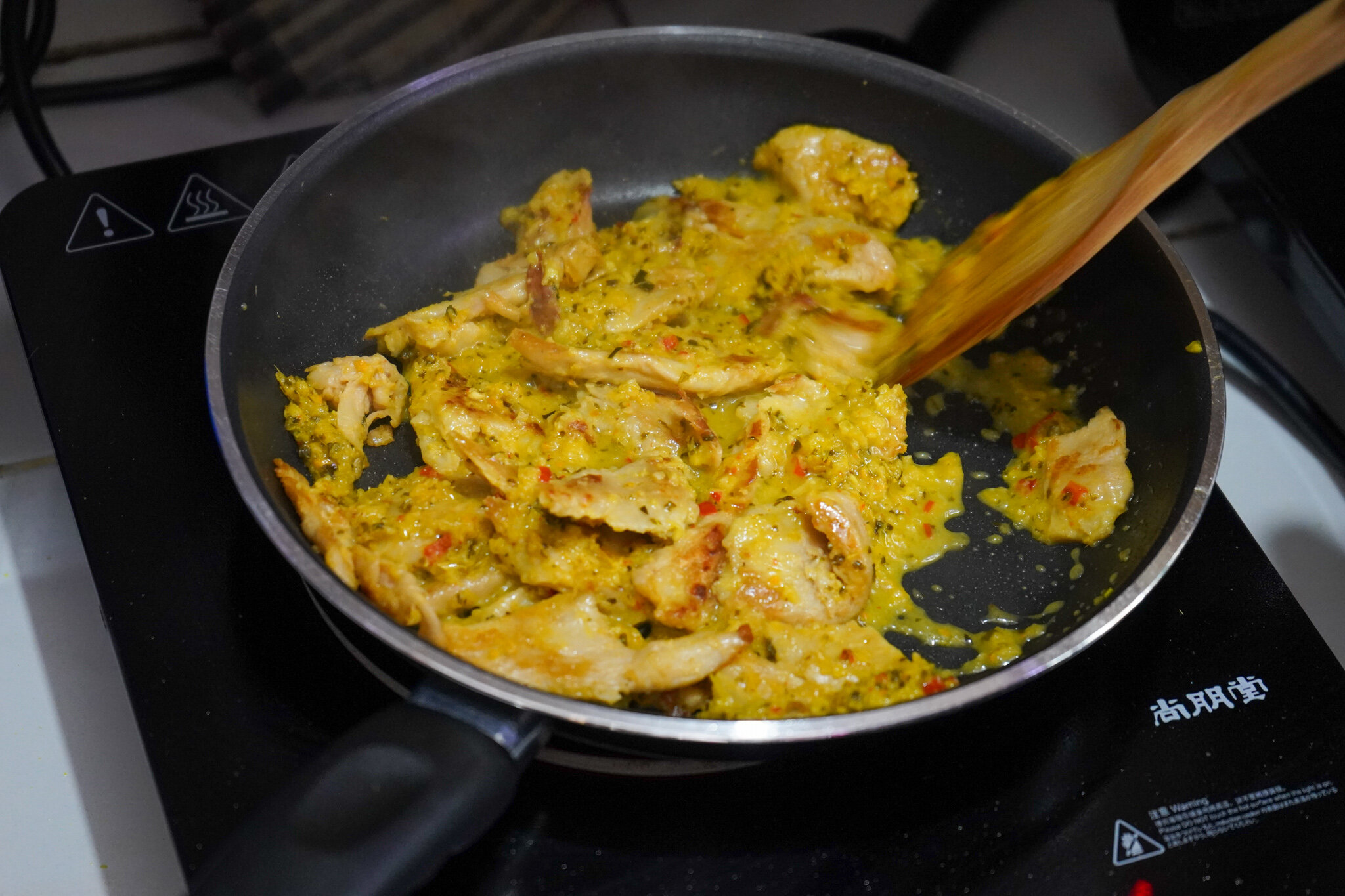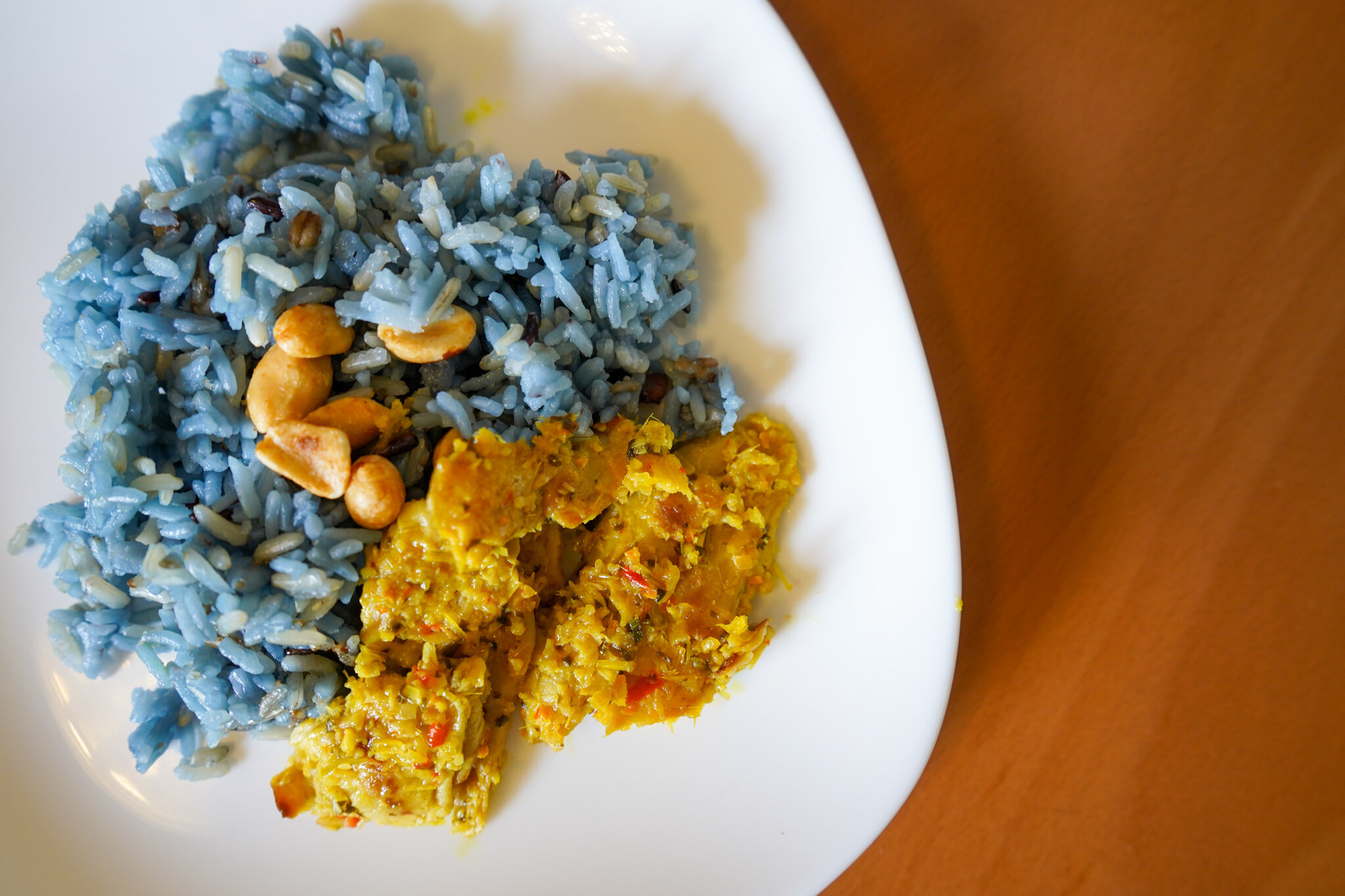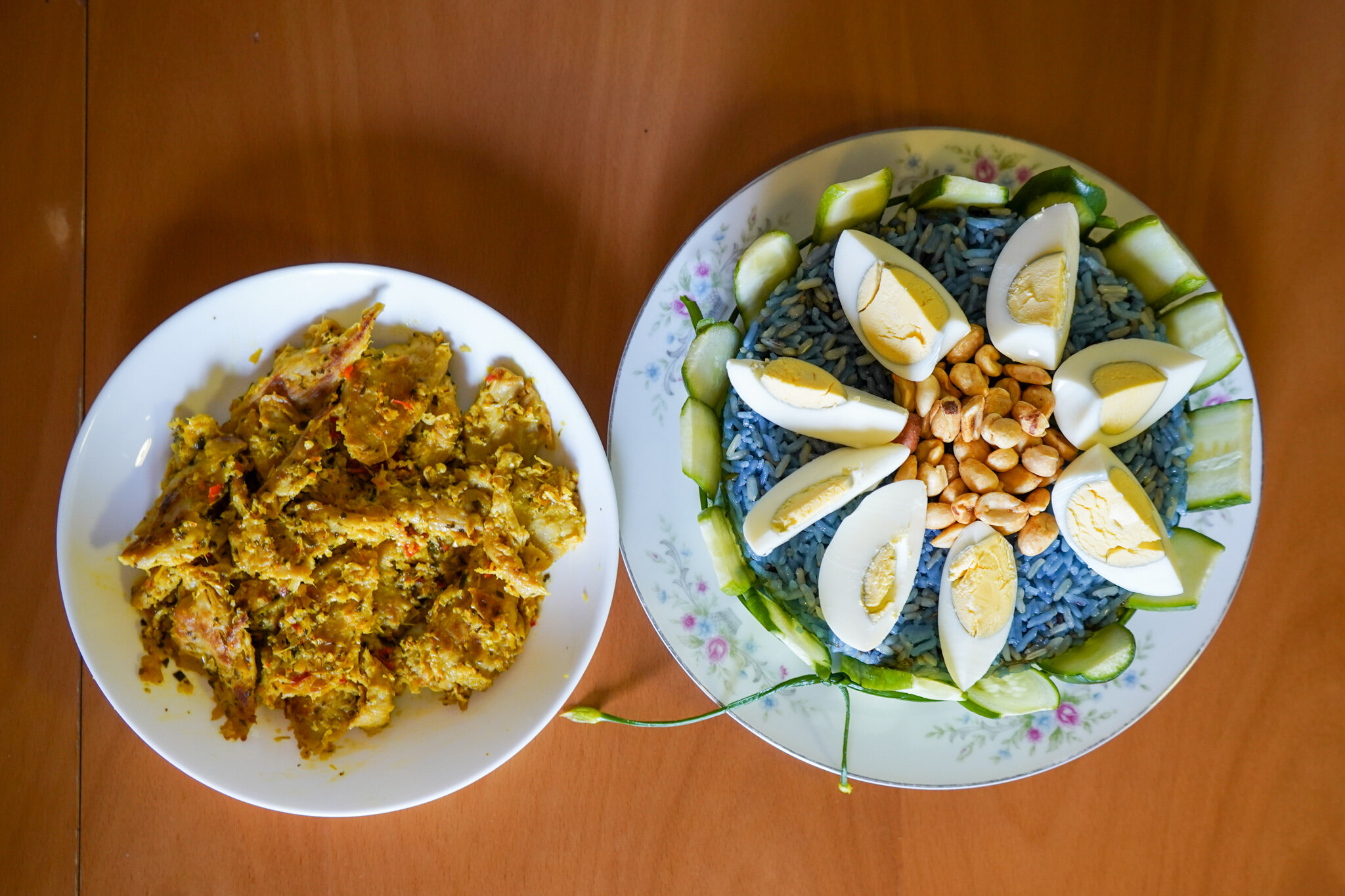【The Food That Makes Us】Nyonya Sambal Heura Chicken with Nasi Lemak
【The Food That Makes Us】Vegetarian Auntie | Nyonya Sambal Heura Chicken with Nasi Lemak
In this series, we head into the kitchens of local Hong Kong homes to see how novel plant-based meat products are used in everyday households. What we discover is a wealth of intimate knowledge with food, as well as memories of how a generation grew up. Beyond the brand of the “future” that these exciting products often adopt, we unveil how forward-thinking innovations and cultures are more connected to our past than we could imagine.
Explore other stories in this series:
Vegan Uncle | Hong Kong-style Jajangmyeon
Omnivore Auntie | Soybean Sprouts Stir Fry with Omnipork Strips
1 / What’s the story behind this dish?
My family is Malaysian-Chinese. My grandparents moved to Malaysia and built a home there. At that time, all three generations lived, cooked, and ate together.
My parents migrated to Hong Kong for political and family reasons. When I was young, my dad worked in construction. Every Lunar New Year, his fellow coworkers from his hometown would come over for dinner. My mum and I made all the hometown food from scratch - the satay, for example, was cooked with the charcoal stove and made from fresh pork we prepared and marinated ourselves.
I chose this dish today because I want to try a vegan version of the nyonya sambal. Nyonya food carries with it our boisterous family memories, passed down through generations from Malaysia to Hong Kong.
*“Nyonya” comes from the Chinese honorific of “married lady”, and Nyonya food originates from Chinese immigrants who moved to present-day Malaysia, Singapore, and Indonesia in the 15th century.
2 / Have you noticed any changes in Hong Kong’s food culture over the years?
Growing up, I lived in a residence under the Government Low Cost Housing Scheme. Everyone lived in close vicinity and shared a good, neighbourly relationship.
Each floor in the building had two rows - we lived in the 8th unit from the lift. Summer days were my most memorable. Stepping out of the lift after getting off school or work, you would see everyone sitting in the corridor talking. Back then, we enjoyed exchanging food as well. Whatever we cooked up at home, we would spare a bit to share with our neighbours.
This is no longer a common scene today. Especially living under the pandemic in the past year, everyone has become extra protective of themselves. Our street here is not bad already; we tend to know what each other is up to. But many families today don’t even know who lives next door, let alone experience the sense of neighbourhood I enjoyed as a child.
3 / What was your turning point in making a significant change in your diet?
For now, it’s health. If we want to push further, it’s because animals are still living beings. I haven’t had the chance to become fully vegan as there are still many family factors to consider. But I do try my best, and follow my heart to eat vegetarian.
I think vegetarian eating should be done with a joyful heart. You can’t force people to eat your way; they have to choose by themselves. If I want those around me to be happy eating vegetarian, I would put more effort into my cooking, adding a dash of creativity here and there. If I myself can’t accept the most conventional types of Lo Hon vegetarian or sweet and sour wheat gluten, how can I expect others to do so?
Thankfully though, there are many more choices available these days, and many more people sharing a great variety of vegetarian food. I looked at the Green Common recipes and think they cater very well to the mainstream public. They also inspired me to make this nyonya dish - bringing innovation to hometown traditions, and letting community memories from my childhood live on in a different way.
4 / Share your plant-based meat recipe.
【Nyonya Sambal Heura Chicken with Nasi Lemak】
Ingredients for the Nyonya Sambal paste
Ingredients for the Nasi Lemak (rice)
Serves: 3
Total cooking time: 1.5 hours
Ingredients:
Nyonya Sambal Paste:
2 sticks lemongrass
5 slices galangal
4 slices turmeric
1 slice ginger
3 red peppers
2 millet peppers
4 lemon leaves
5 cloves garlic
3 shallots
1 onion
Some coriander stems
4 candlenuts
3 Thai limes
50g tamarind (you can also use store-bought tamarind paste)
2 tsp coconut sugar
1 pack Heura Chicken
Nasi Lemak:
4 pandan leaves
4 slices ginger
30 buds butterfly pea flowers
50g coconut milk
300g rice
A pinch of salt
Sliced cucumber, chives, or peanuts for decoration
*The above ingredients can all be purchased in one go from Indonesian, Thai, or Southeast Asian stores. They are very affordable too!
Steps:
Nyonya Sambal Heura Chicken:
Peel all the ingredients for the paste and slice or chop into strips. Put everything into the blender. Add some oil and blend into a paste.
Soak the tamarind with hot water – the water will have to be added to the paste later. (You may also use store-bought tamarind paste.)
Squeeze the limes to add the juice into the paste.
In a wok on slow heat, fry the paste until evenly combined. Add the tamarind juice/paste. Season with coconut sugar, and vegan oyster sauce and soy sauce to taste.
Pan fry the Heura chicken until golden. Finally, mix in the paste.
Nasi Lemak:
Use 360mL hot water to soak the butterfly pea flowers.
Rinse and drain the rice. Cook with the tainted liquid from the butterfly pea flowers, ginger, pandan leaves, coconut milk, and salt all mixed well.





